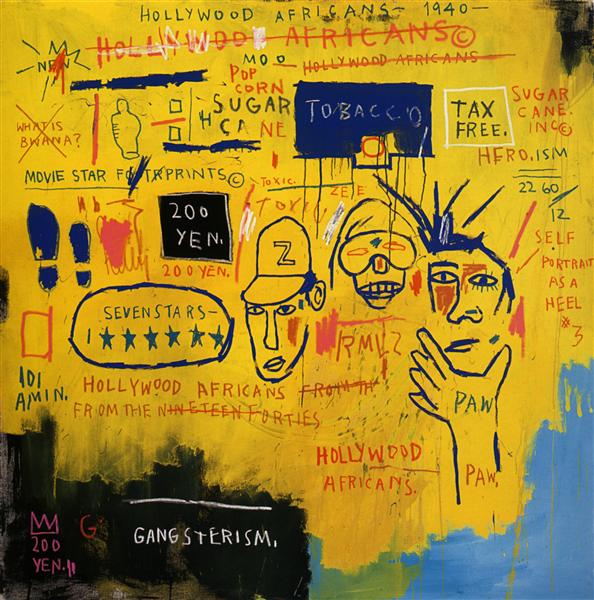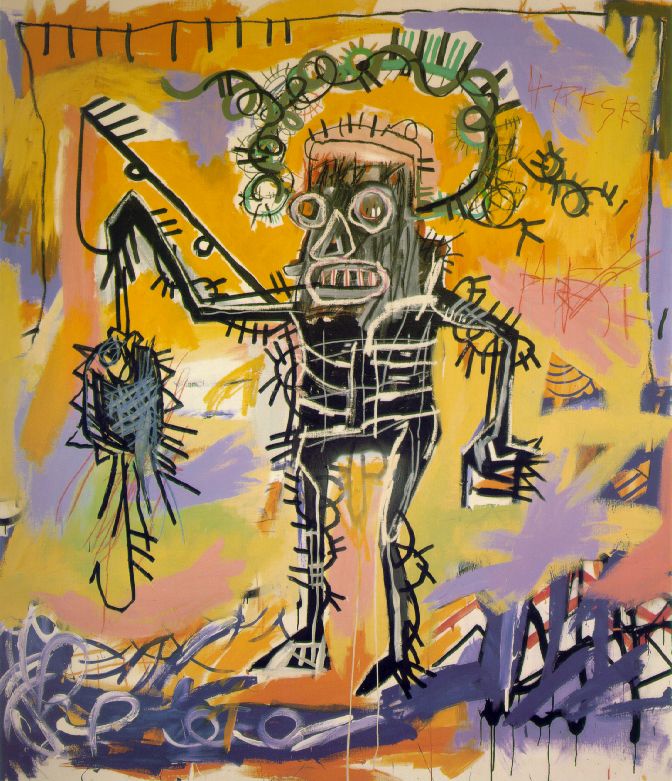
In 1983, Basquiat was already a fairly well-known artist not only in New York. His works take part in exhibitions, and he himself travels a lot: sometimes accompanying Andy Warhol (for example, on trips to Europe), sometimes – relaxing with friends. This year he traveled to Los Angeles to exhibit his paintings at an exhibition at the Larry Gagosian Gallery. The trip was accompanied by rap musician Rammellzee and graffiti artist Toxic. During this trip, Basquiat created a series of pictorial and textual works, one of which was the canvas “Hollywood Africans”.
In the picture, the artist depicted their trinity, as if standing under the sights of cameras. Basquiat most often used solid colors, squeezing paint from tubes directly onto the canvas without using a palette. In this work, he chose one of his favorite colors for the background, which has become a kind of symbol of the sunny Hollywood hills with their luxurious lifestyle. Against this background, the heroes of the canvas look slightly puzzled and dissatisfied. I must say that in America in the 80s, prejudice against blacks was still very strong. Basquiat, even as a famous artist, has repeatedly faced manifestations of racism and aggression. And the picture “Hollywood Africans” became a kind of mockery of the white-skinned elite from the “savage” who achieved success. In the words surrounding the heroes of the canvas, Basquiat has collected all the stereotypes regarding dark-skinned Hollywood actors in the 80s. For example, “sugar cane”, “tobacco”, “gangsterism” and “What is Bwana?” (most likely a reference to the 1963 Call Me Bwana movie).
In this work, as in many others, Basquiat crosses out some of the lines written. By his own admission, he did it to draw attention to them: “I cross out the words so that you can see them better. The fact that they are crossed out makes you want to read them. “
Year of painting: 1983.
Painting dimensions: 213.4 x 213.4 cm
Material: canvas.
Writing technique: acrylic, crayon.
Genre: figurative painting.
Style: neo-expressionism.
Gallery: Whitney Museum of American Art, New York, USA.


